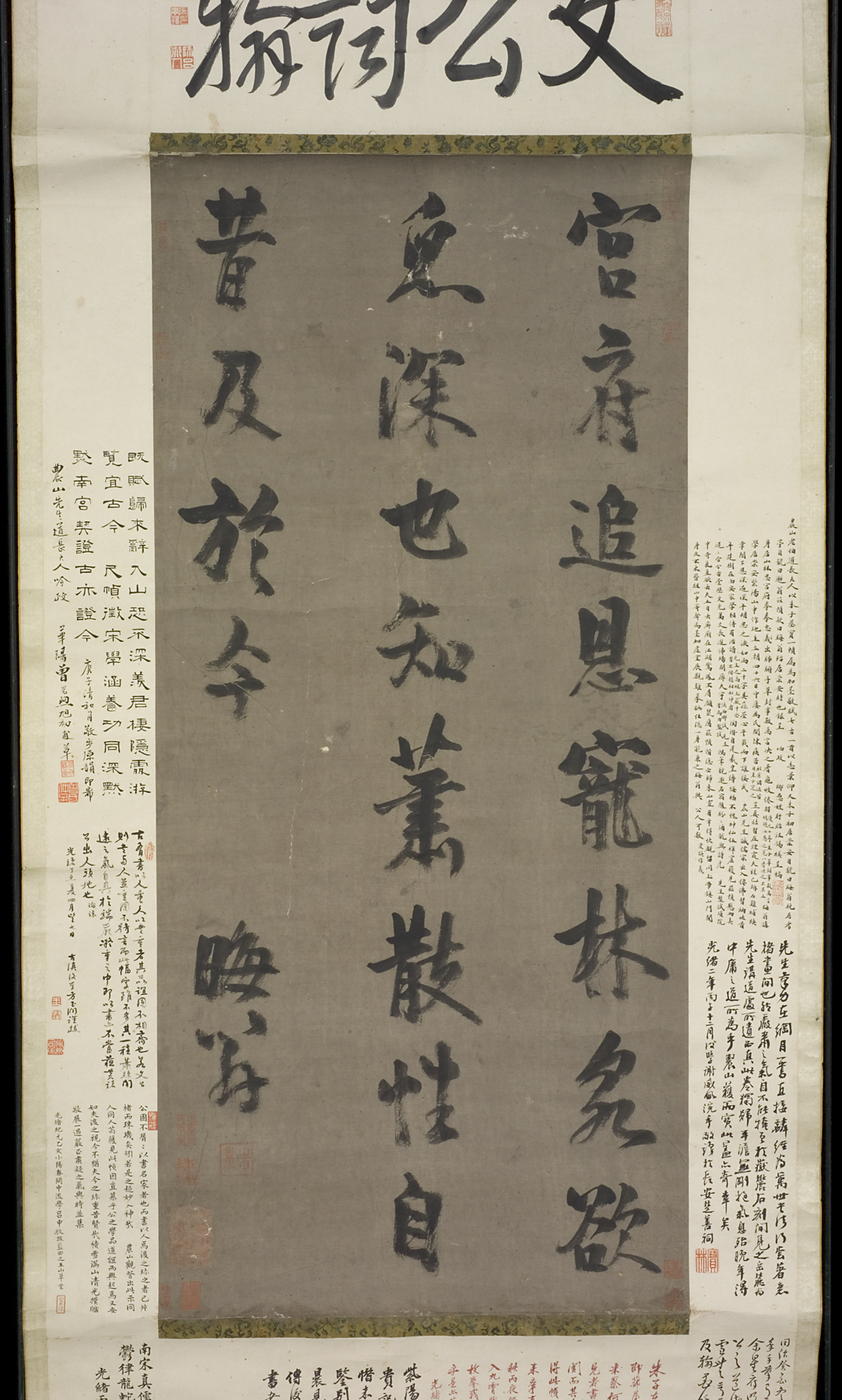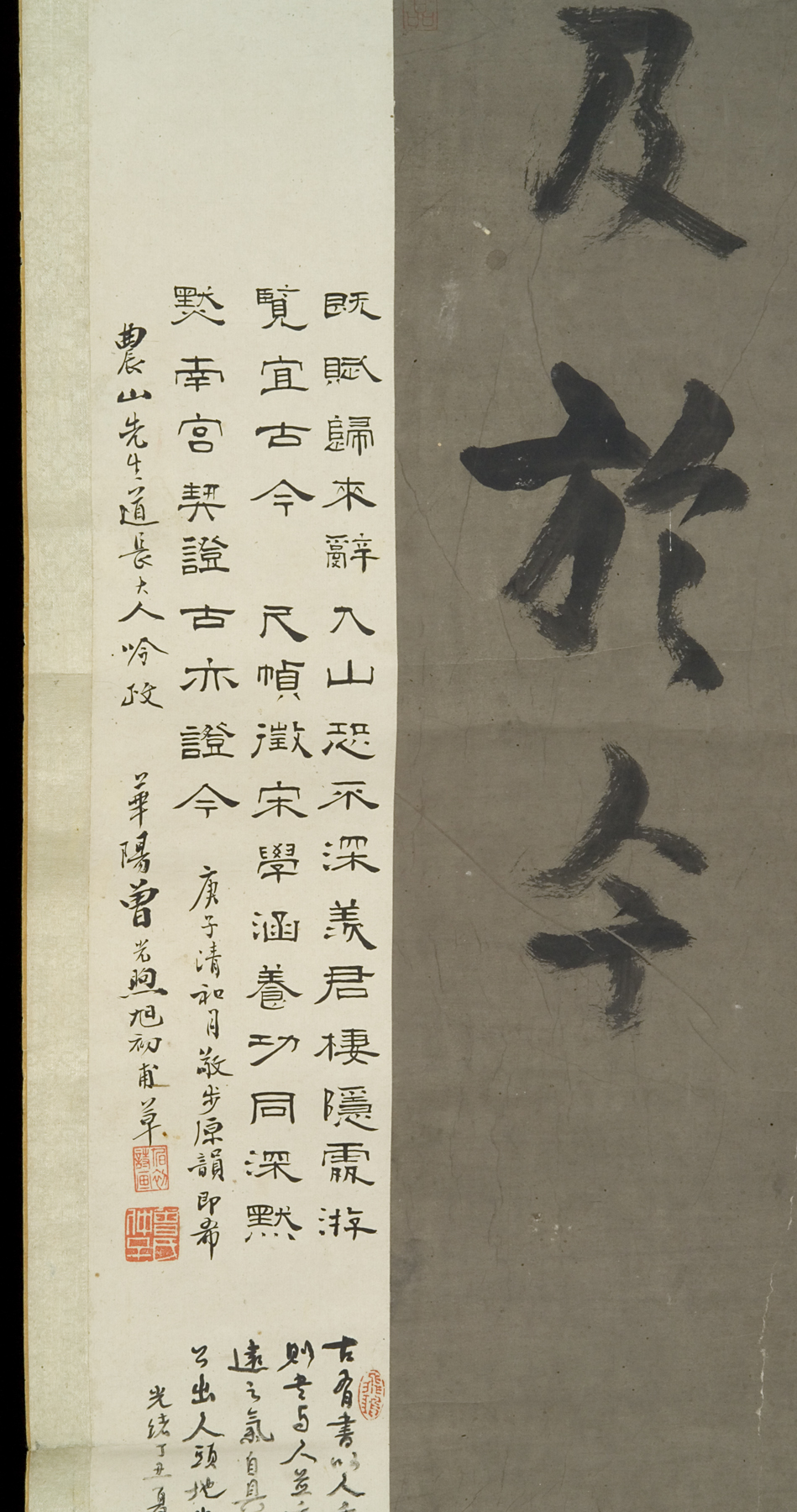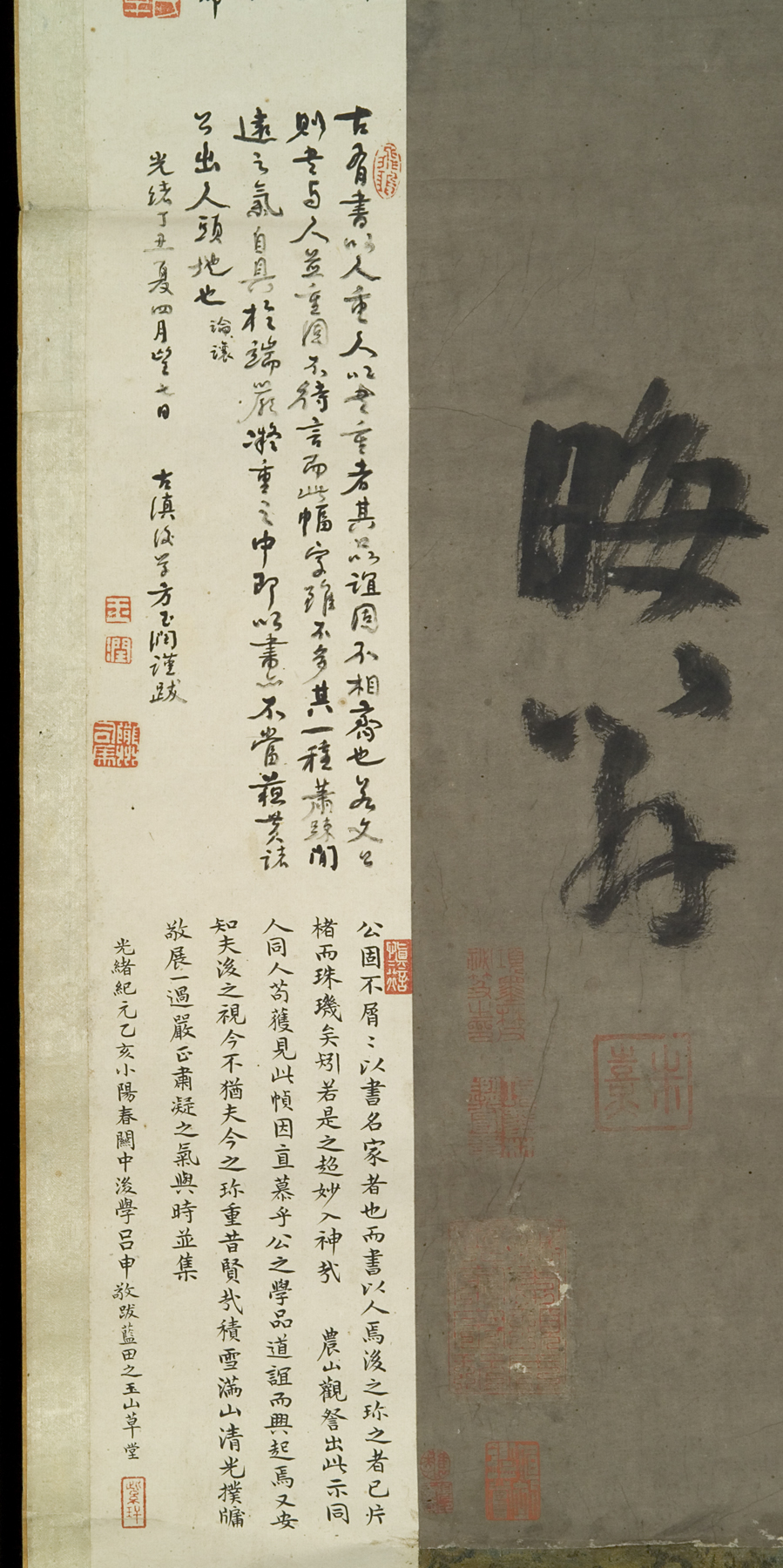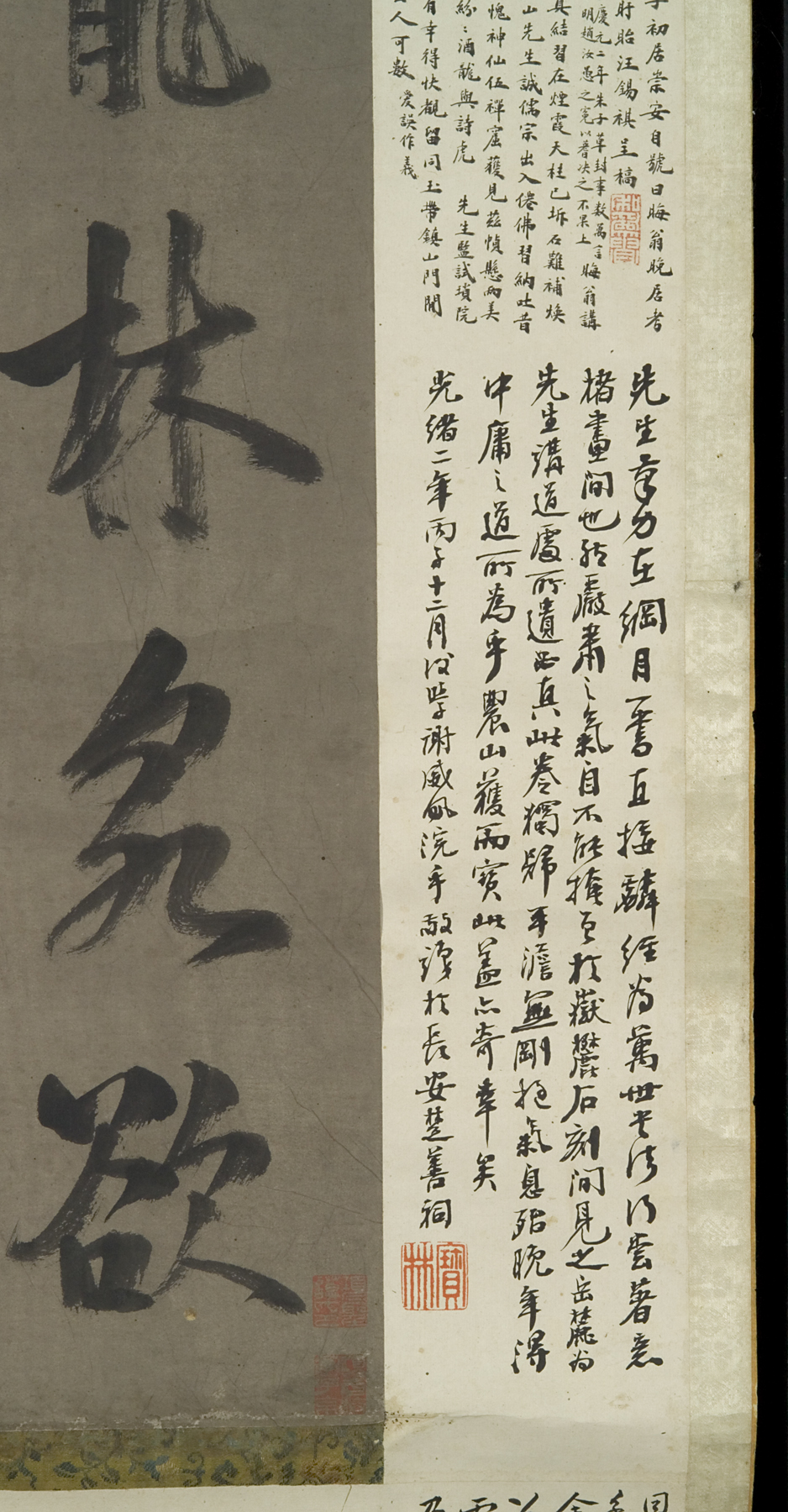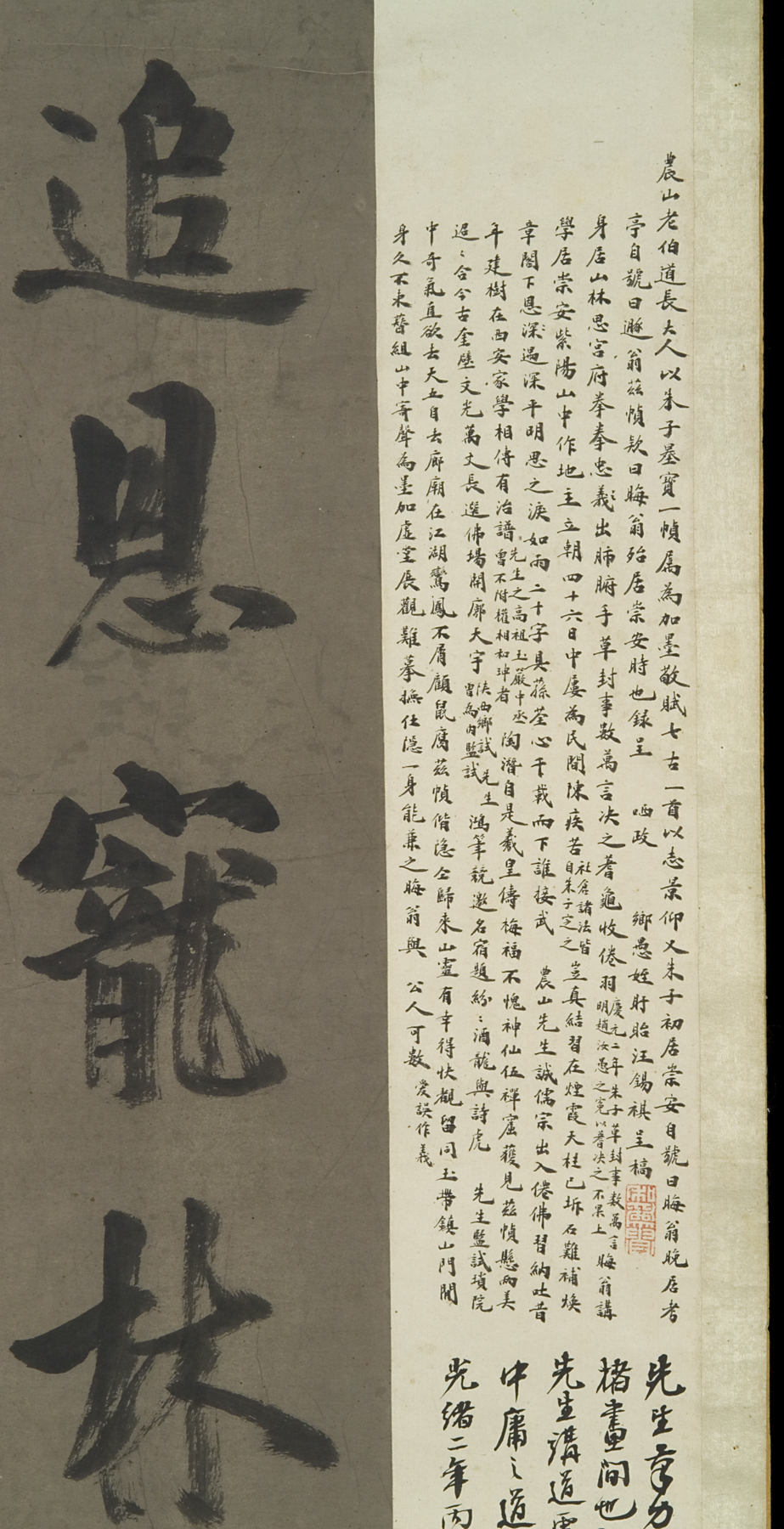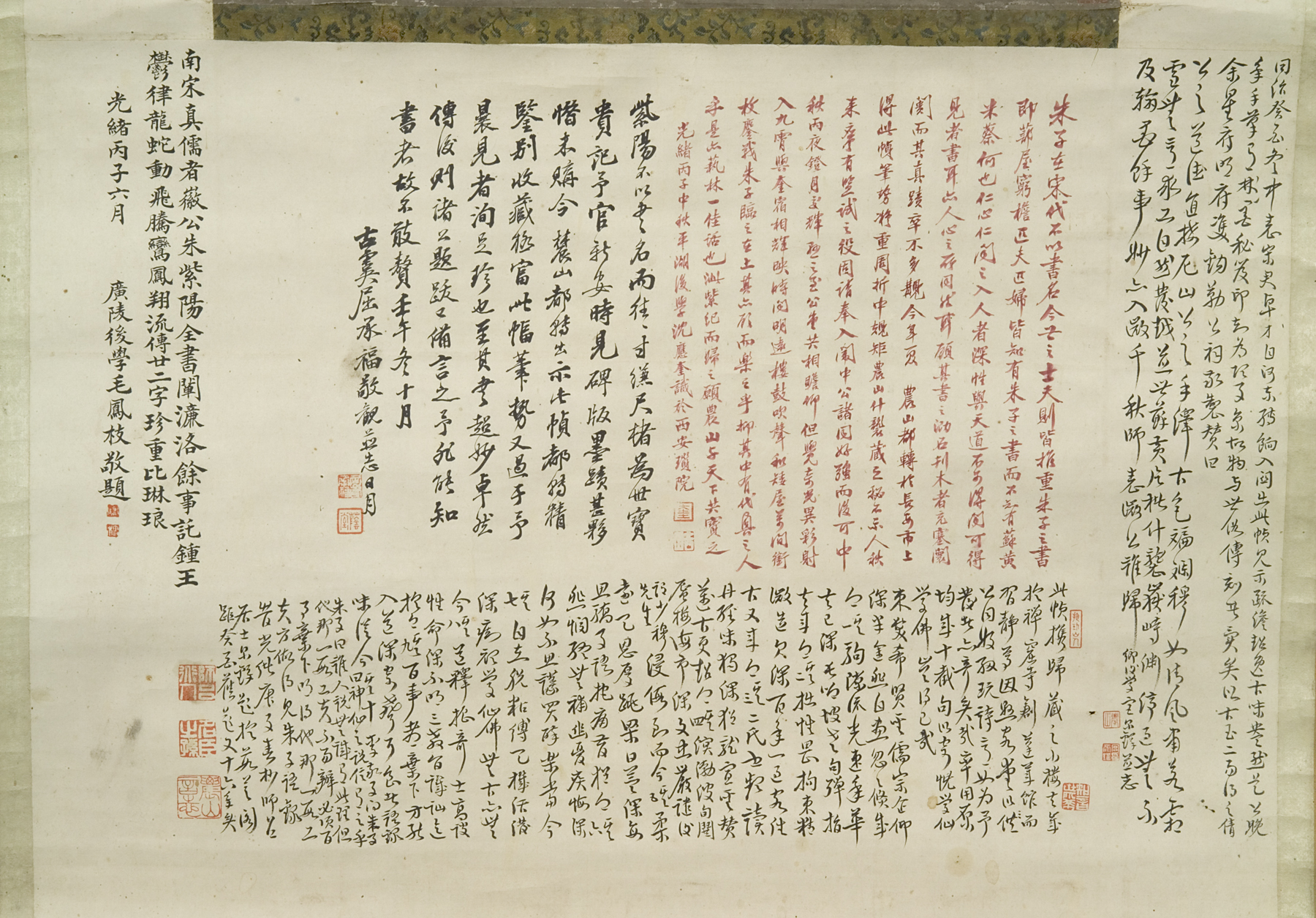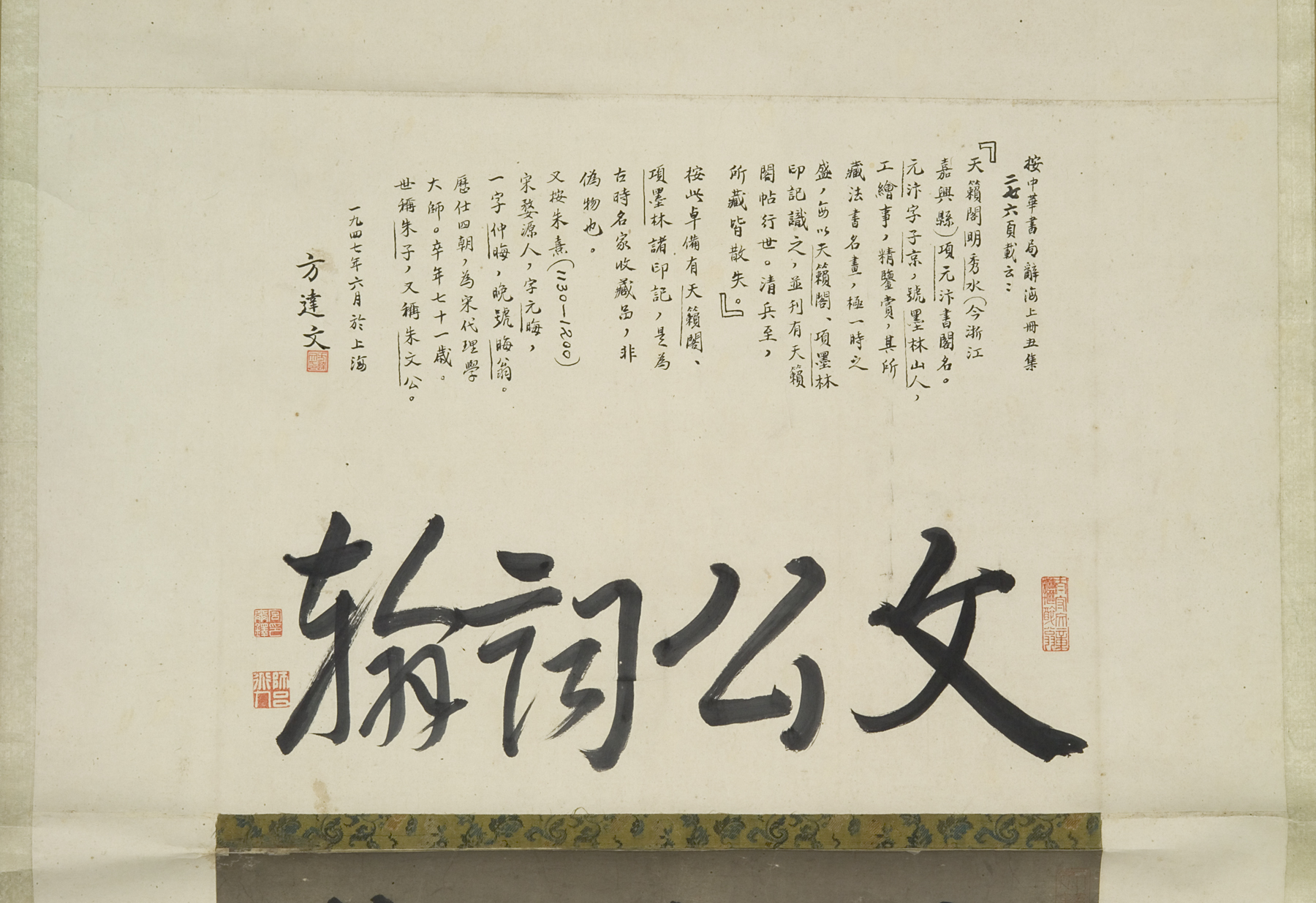Calligraphy with Accompanying Commentaries, Zhu Xi
Artwork Overview
Zhu Xi, artist
1130–1200
Calligraphy with Accompanying Commentaries,
1130–1200, Southern Song dynasty (1127–1279)
Where object was made: China
Material/technique: paper; ink
Dimensions:
Image Dimensions Height/Width (Height x Width): 204.8 x 69.3 cm
Image Dimensions Height/Width (Height x Width): 80 5/8 x 27 5/16 in
Mount Dimensions (Height x Width x Depth): 275.5 x 73.8 cm
Mount Dimensions (Height x Width x Depth): 108 7/16 x 29 1/16 in
Image Dimensions Height/Width (Height x Width): 204.8 x 69.3 cm
Image Dimensions Height/Width (Height x Width): 80 5/8 x 27 5/16 in
Mount Dimensions (Height x Width x Depth): 275.5 x 73.8 cm
Mount Dimensions (Height x Width x Depth): 108 7/16 x 29 1/16 in
Credit line: Gift of Dr. William P. Fenn
Accession number: 1977.0024
Not on display
If you wish to reproduce this image, please submit an image request

